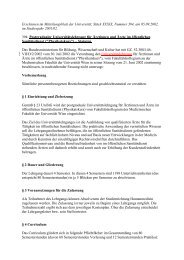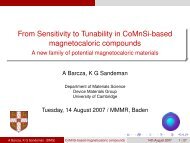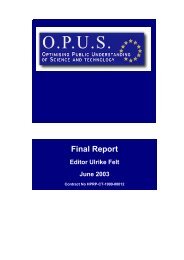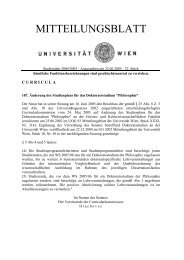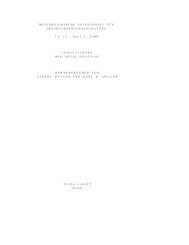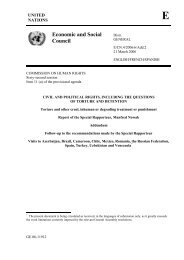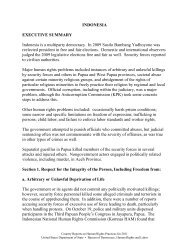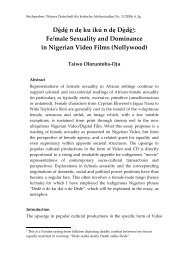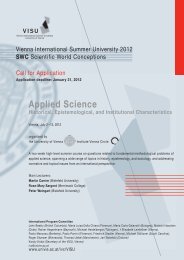(Stand: 25. Juli 2007) ANDERSON, Michael Alan ... - Universität Wien
(Stand: 25. Juli 2007) ANDERSON, Michael Alan ... - Universität Wien
(Stand: 25. Juli 2007) ANDERSON, Michael Alan ... - Universität Wien
You also want an ePaper? Increase the reach of your titles
YUMPU automatically turns print PDFs into web optimized ePapers that Google loves.
MEDIEVAL & RENAISSANCE MUSIC CONFERENCE <strong>2007</strong> – WIEN, 7.-11. AUGUST ABSTRACTS<br />
with recomposition that in all likelihood stems from Zarlino himself. The rewriting of the<br />
non-canonic voices of the motet is not merely that of minor adjustments, and appears<br />
predicated on changed priorities of text setting, declamation, and articulation. While the<br />
brief chapter of the final section of the Le istitutioni harmoniche entitled “How to Assign<br />
Note Values to Words” is sometimes adduced in support of principles of text setting, the<br />
two versions of the Pater noster – Ave Maria offer an object lesson in how such principles<br />
might be realized.<br />
� �<br />
JÜRGENSEN, Frauke (Department of Music, University of California)<br />
Performers’ accidentals in the Buxheim Organ Book and its concordances: a computer-aided<br />
study<br />
Mittwoch/Wednesday, 8.8., 14.30 Uhr, KuGe, SR 1<br />
Modern performers of fifteenth-century music must make decisions about where to add<br />
accidentals. Scholars have pursued two traditional strategies for answering these questions:<br />
the study of theoretical treatises, and the analysis of small groups of pieces. Each of<br />
these strategies is limited, in that the conclusions that can be drawn are not broadly applicable.<br />
I have addressed these problems by using a new methodology on a larger sample<br />
group than ever before: the Buxheim Organ Book (about 250 pieces), and all its concordances<br />
(over 200). Buxheim’s tablature notation is more pitch-specific than mensural notation,<br />
making it especially valuable for telling us about actual musical practice. My findings<br />
show a considerable degree of consistency in the placement of accidentals.<br />
The entire Buxheim repertory with concordances was electronically encoded in a<br />
format compatible with David Huron’s Humdrum Toolkit for computer-aided musical<br />
analysis. I developed new tools to identify situations in the music that might carry accidentals.<br />
Each of these situations can then be cross-referenced against many other features<br />
of the music. For example, all leaping-contratenor cadences can be extracted, and sorted by<br />
arrival pitch, signature accidentals, and finals. These tools reveal patterns that shed light<br />
on the intabulators’ priorities in choosing accidentals.<br />
Analysis of the data provides us with several noteworthy conclusions. There is<br />
strong statistical support for the use of double leading tones. The incidence of raised leading<br />
tones correlates with the apparent strength of a cadential progression, as well as the<br />
cadential pitch in relation to final of the composition. Other findings concern the use of<br />
flats at the peaks of melodic arches; also, there are clear differences between the treatment<br />
of ascending and descending lines.<br />
These conclusions are specific to the Buxheim intabulators, but the methodology<br />
explored here will prove helpful for understanding performers’ accidentals in both mensural<br />
and tablature sources of late medieval and early modern music.<br />
� �<br />
- 47 -




